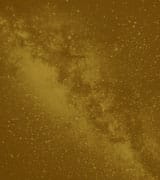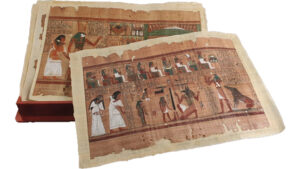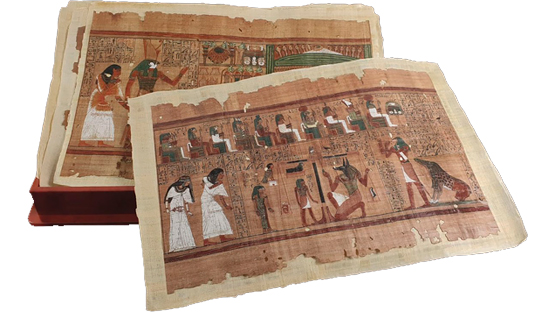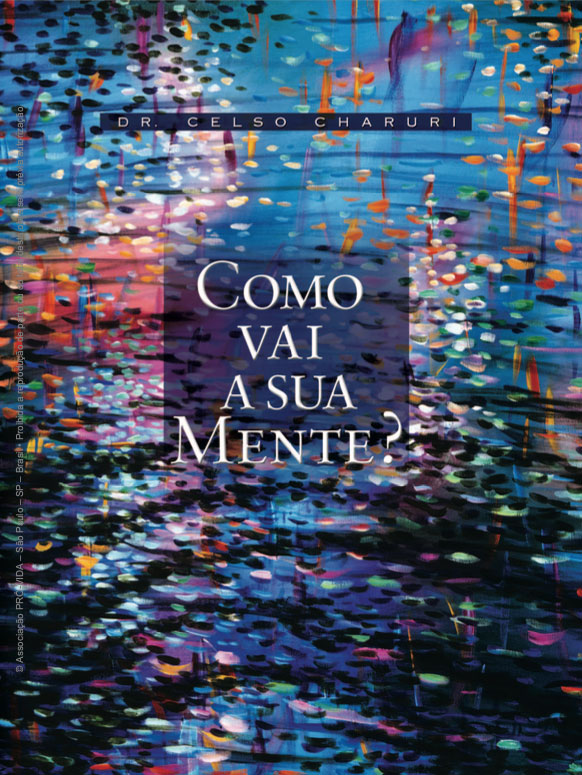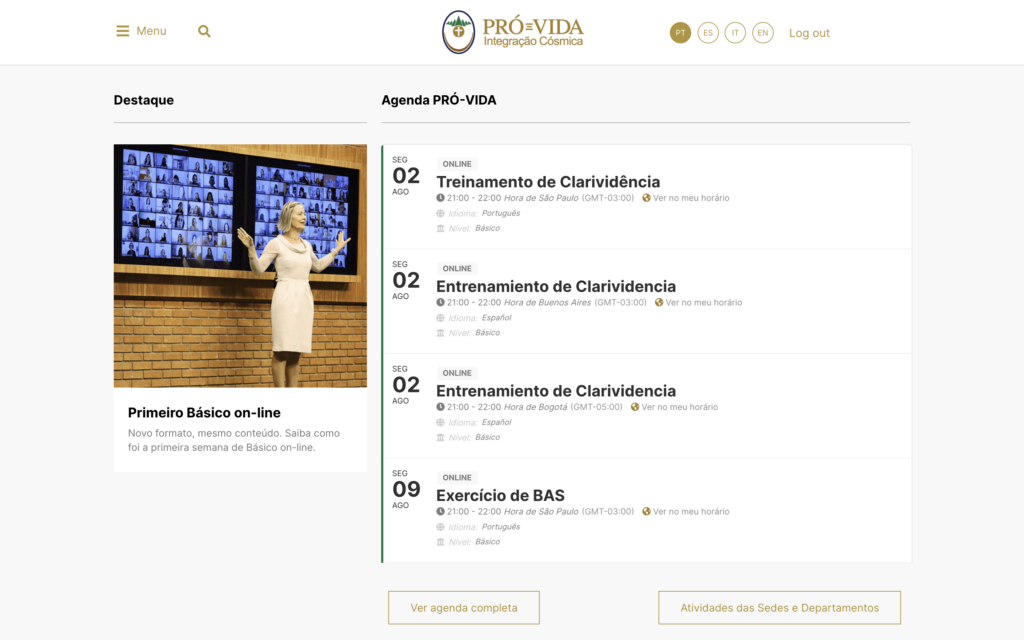Tutankhamun, 100 years of discoveries
Tutankhamun, 100 years of discoveries
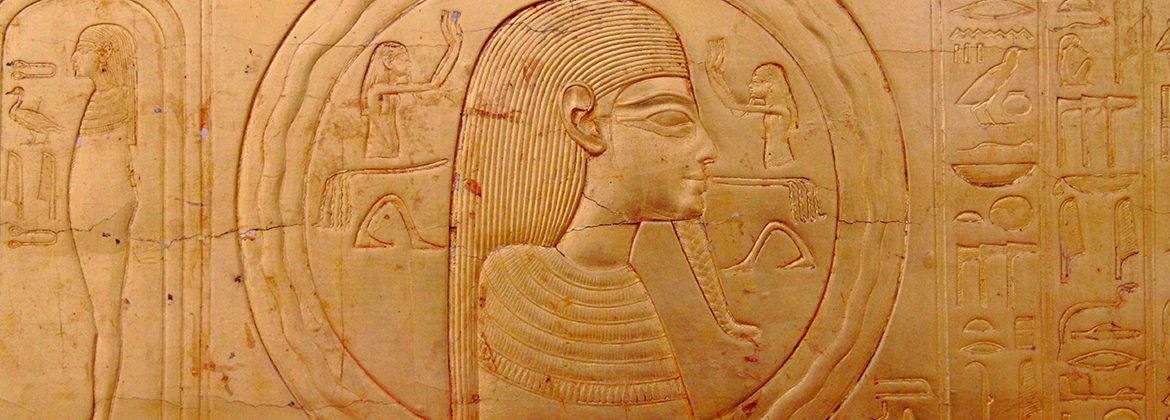
An axiom among archaeologists who study the Ancient Egypt says that the more discoveries that are made, the deeper and more intense are the mysteries of this remarkable civilization.
The finding of the tomb of the Boy Pharaoh Tutankhamun on November 24,1922, [about a century ago] is considered one of the most extraordinary and important discoveries, because of the mummy’s preservation, and the numerous and apparently untouched artifacts.
Already in the nineteenth century, archaeology was growing beyond mere adventure and the search for treasure, and was beginning to concentrate on addressing the great enigmas of mankind’s history. There was wide international interest, and teamwork was already a reality. Also, archaeologists now had much more accurate and sophisticated tools and methods at their disposal, thus giving a serious scientific stature to what before had been a paradise of thieves and traders.
By 1922 many tombs had been found in the Valley of the Kings, but the damage done by thieves and amateur diggers was very discouraging to serious archaeologists.
Among the debris the American Theodor Davis found objects that made reference to an enigmatic pharaoh named Tutankhamun. These included an earthenware cup, clay funerary vases, and other small pieces that could have belonged to the king.
Tutankhamun history
Tutankhamun belonged to the eighteenth dynasty, and ruled between 1341 and 1323 BC. His origins are unclear. One view is that he was the son of Akhenaten, the fruit of his first marriage to Queen Kiya, who died in labor. (There is some recent DNA evidence to support this.) Another view is that he was Akhenaten’s brother. It is undeniable that he showed some similarities of physical appearance to Akhenaten, notably the elongated skull. His nurture was the responsibility of Maya, his wet nurse, who brought him up according to existing inscriptions on the walls of the Saqqara pyramid. In any case, we know that he was born and raised in Akhetaten*, under the name of Tutankhaten (Aten’s living image). After the death (and subsequent expunging from Egyptian history) of Akhenaten, he was taken to Thebes, by order of the priests, and renamed Tutankhamun (the living image of Amun). He became pharaoh while still a child of eight or nine.
*Akhetaten (Aten’s horizon) also known as Amarna, Tell el-Amarna or el-Amarna – the City of the Sun built by Akhenaten.
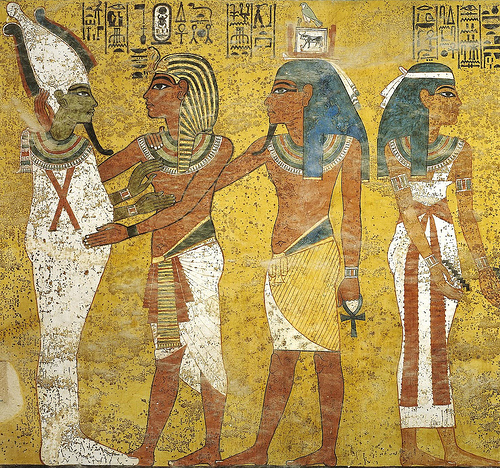
We know from pictures depicting the couple that when he was about ten years old he married Ankhesenamun, who could have been the daughter of Nefertiti, and therefore his half-sister.
What has been proved is that he died young, at the age of eighteen or nineteen, and did not leave heirs, although two mummified fetuses**, of five and eight months of gestation, were found in his tomb.
Since he died without heirs and thus ended the dinasty, if left a very complicated situation regarding who his successor would be.
** If, as has been suggested, they were the couple’s miscarriages, why would they have been buried so much later? And, if not, what might their origins be?
Of great importance in this, a letter has survived that was sent to the king of the Hittites by a widowed Egyptian queen (could she have been Ankhesenamun?), saying that there were no descendant heirs to the Egyptian throne. As a solution she proposed marrying one of the Hittites princes, thus saving herself from a union with a commoner. It is known, however, that this prince never reached his destination. It is supposed that he was killed on the orders of Ay, Akhenaten’s advisor, and always a candidate for the throne.
Paintings on the walls of Tutankhamun’s tomb show scenes of the burial. On these, Ay***, on the right, officiates in the important “opening of the mouth” ceremony, which gives life and breath for the journey to the other world. Tutankhamun, on the left, is depicted wearing the vestments of one who has been enthroned as pharaoh.
*** In Ay’s tomb there is a painting showing him with his first wife, Queen Tiye. This leads us to another mystery: did he in fact marry Ankhesenamun? If not, how could he, a commoner, take the throne? Or, another possibility, did he invoke her (Tiye’s ?) ancestors to prove her royal descent, thus enabling him to take the throne?
It is worth noting that the mummified bodies of Akhenaten, Nefertiti and Ankhesenamun have not yet been found, although the one in the controversial tomb KV55 may or may not be Akhenaten. That would open up new perspectives on Tutankhamun’s tomb, possibly clarifying some of the many questions that still remain.
It is known that both Akhenaten’s and Tutankhamun’s reigns were expunged from Egyptian history, as is shown by their absence from a mural in Abydos, which otherwise includes the names of all the pharaohs up to Seti I. The exclusion of Tutankhamun’s name from this is especially surprising since he had been accepted by the priests.
The importance of the discovery of Tutankhamum’s tomb was greatly enhanced by the hope that these and other issues could now be clarified.
Let’s go back now to the events of November 1922.
Findings in the excavations
Howard Carter was a painter and designer who accompanied the works of the renowned archaeologists Petrie and Davis, his masters and supporters. Carter was also supported financially by Lord Carnarvon.
Petrie and Davis were so determined that, after Egyptian government authorization had been granted, they began their excavations in spite of the current general idea that “the time of the Valley of Kings had already passed”.
The archaeologist had already worked in Amarna, and from that understood that Akhenaten and Nefertiti had a son, believed to be Tutankhamun.
Carter concentrated on the sporadic findings of Davis, especially the objects and stamps that were shown to have belonged to the Boy Pharaoh. He drew a triangle for the excavations, fixing on a small lateral valley; he was guided more by his intuition than his reason.
As soon as the work began, in the very first perforation, there were already signs of Tutankhamun’s tomb.
After negotiating the steps, Carter was faced with a sealed door, patched with mortar. On it he identified, among other things, the cartouche of the pharaoh for which he had been searching.
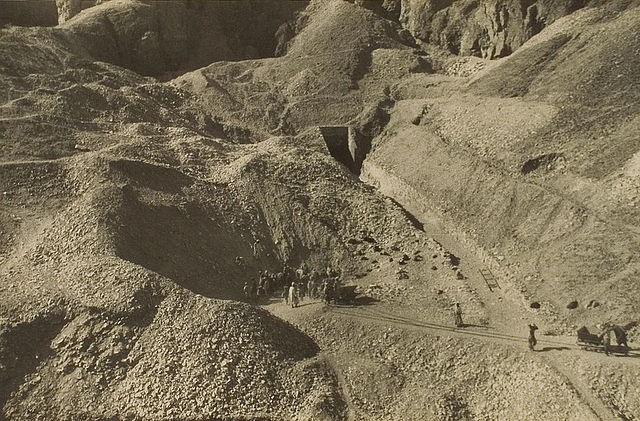
In the presence of Carnarvon, Carter made a small hole in the second door, through which he inserted a candle. In the hot air, the light spread, flickering and bright, revealing a treasure: numerous objects with an abundance of gold, but without sarcophagi or mummies.
Later on, having recovered from his amazement, Carter said
“
“…We were amazed when we made that discovery. We could see for the first time the splendour of Egypt in the Imperial Era, fifteen centuries before Christ… The effect was breathtaking, almost frightening. Besides, the extent of the discovery took us by surprise.We certainly expected to find Tutankhamun’s tomb in the Valley of Thebes, but the greatest surprise was to find it intact.”
On opening the third door, guarded by two sentries, they found a wooden safe – a real masterpiece in every sense of the word, with bright colors and pleasing drawings. There were also three caskets, furniture, weapons, clothes, a richly carved throne and four gold chariots.
The opening of the tomb
But where would the sarcophagus be? In the third chamber there were more valuable objects, and then a fourth door, which was opened on February 17, 1923, in front of a small audience of photographers and designers. Inside they found a huge solid gold wall, the entrance to a chamber where there was an urn, and pearls scattered on the floor. Everything seemed untouched, even after millennia!
The urn was also covered with gold and several protective magical signs. There was another urn with an intact seal, and a third that was less ornamented. Finally, there was the yellow quartz sarcophagus. Everything shone with gold, and at its foot was a goddess with opened wings and arms, in a protective posture.
The dismantling of the urns was done outside the tomb and took eighty four days. A crane was needed to lift the heavy slab.
Everything was found to be covered with linen cloths which, when removed, revealed an extraordinary solid gold mask, encrusted with precious stones, which had the appearance more of life than of death. On the crossed hands were royal insignias: a staff and a fan. The body was represented in bas relief but, thanks to the skill of the craftsman, the face of the young pharaoh was eternalized in imperishable metal.
However, not all the news was good. In the space between the second and third coffins, humidity and a solid layer of black was found. This was caused by an excess of embalming fluid which had severely damaged the mummy itself, except for the face and feet.
And Carter, how did he react to his great find? He spoke and did not speak:
“
“In such moments we are lost for words.”
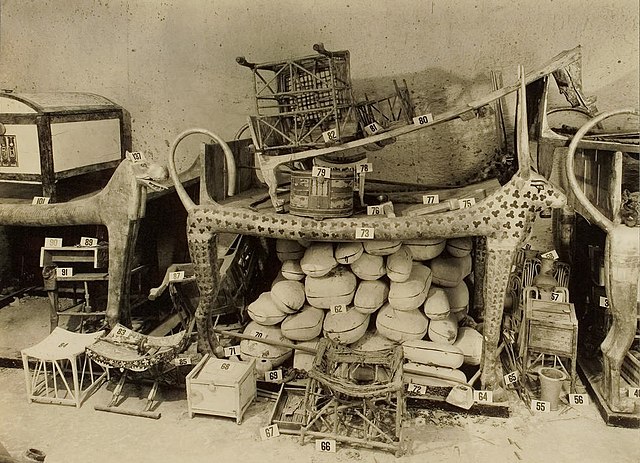
Around 5,000 objects were found preserved in the tomb, including those made of materials more prone to deterioration, such as wood and leather, and some egg-shaped boxes containing meat. There were religious and funerary objects, furniture, toys, clothes, board games, walking canes, weapons – bows, arrows, shields and armor – chalices, jewelry, food, and war chariots.
Of special note is an iron sword which, together with an amulet of the same metal, was placed behind the cushion where Tutankhamun’s head rested. These were made in the bronze age, when there was no knowledge of iron extraction techniques. We now know that they were made from fragments of meteorites which contained that metal and, because they had come from the sky, were considered sacred.
Among many other objects worth noting were cosmetics, boats, vases, and pots of honey which was still edible, since it is immune to bacterial deterioration.
On the beautiful throne found in the tomb, the original names of the pharaoh and his wife are inscribed:Tutankaten and Ankhesenaten. One can only wonder what might have happened that these were used and not the names which replaced them: Tutankhamun and Ankhesenamun.
As well as the two mummified fetuses, they found by the pharaoh’s sarcophagus locks of the hair of Queen Tiye, Akhenaten’s mother and, according to some, Tutankhamun’s grandmother.
There have been some observations made regarding the tomb’s location and its construction,j that is, it occupied a very small space considering the amount it contained. It has been suggested that it might have been built for another person and hurriedly adapted for the pharaoh’s funeral.
Why are there so few facts about the reign (1341 to 1323 BC)? It seems to suggest a strange sort of obscurantism.
Tutankhamun history
Tutankhamun belonged to the eighteenth dynasty, and ruled between 1341 and 1323 BC. His origins are unclear. One view is that he was the son of Akhenaten, the fruit of his first marriage to Queen Kiya, who died in labor. (There is some recent DNA evidence to support this.) Another view is that he was Akhenaten’s brother. It is undeniable that he showed some similarities of physical appearance to Akhenaten, notably the elongated skull. His nurture was the responsibility of Maya, his wet nurse, who brought him up according to existing inscriptions on the walls of the Saqqara pyramid. In any case, we know that he was born and raised in Akhetaten*, under the name of Tutankhaten (Aten’s living image). After the death (and subsequent expunging from Egyptian history) of Akhenaten, he was taken to Thebes, by order of the priests, and renamed Tutankhamun (the living image of Amun). He became pharaoh while still a child of eight or nine.
*Akhetaten (Aten’s horizon) also known as Amarna, Tell el-Amarna or el-Amarna – the City of the Sun built by Akhenaten.

We know from pictures depicting the couple that when he was about ten years old he married Ankhesenamun, who could have been the daughter of Nefertiti, and therefore his half-sister.
What has been proved is that he died young, at the age of eighteen or nineteen, and did not leave heirs, although two mummified fetuses**, of five and eight months of gestation, were found in his tomb.
** If, as has been suggested, they were the couple’s miscarriages, why would they have been buried so much later? And, if not, what might their origins be?
Since he died without heirs and thus ended the dinasty, if left a very complicated situation regarding who his successor would be.
Of great importance in this, a letter has survived that was sent to the king of the Hittites by a widowed Egyptian queen (could she have been Ankhesenamun?), saying that there were no descendant heirs to the Egyptian throne. As a solution she proposed marrying one of the Hittites princes, thus saving herself from a union with a commoner. It is known, however, that this prince never reached his destination. It is supposed that he was killed on the orders of Ay, Akhenaten’s advisor, and always a candidate for the throne.
Paintings on the walls of Tutankhamun’s tomb show scenes of the burial. On these, Ay***, on the right, officiates in the important “opening of the mouth” ceremony, which gives life and breath for the journey to the other world. Tutankhamun, on the left, is depicted wearing the vestments of one who has been enthroned as pharaoh.
*** In Ay’s tomb there is a painting showing him with his first wife, Queen Tiye. This leads us to another mystery: did he in fact marry Ankhesenamun? If not, how could he, a commoner, take the throne? Or, another possibility, did he invoke her (Tiye’s ?) ancestors to prove her royal descent, thus enabling him to take the throne?
It is worth noting that the mummified bodies of Akhenaten, Nefertiti and Ankhesenamun have not yet been found, although the one in the controversial tomb KV55 may or may not be Akhenaten. That would open up new perspectives on Tutankhamun’s tomb, possibly clarifying some of the many questions that still remain.
It is known that both Akhenaten’s and Tutankhamun’s reigns were expunged from Egyptian history, as is shown by their absence from a mural in Abydos, which otherwise includes the names of all the pharaohs up to Seti I. The exclusion of Tutankhamun’s name from this is especially surprising since he had been accepted by the priests.
The importance of the discovery of Tutankhamum’s tomb was greatly enhanced by the hope that these and other issues could now be clarified.
Let’s go back now to the events of November 1922.
Findings in the excavations
Howard Carter was a painter and designer who accompanied the works of the renowned archaeologists Petrie and Davis, his masters and supporters. Carter was also supported financially by Lord Carnarvon.
Petrie and Davis were so determined that, after Egyptian government authorization had been granted, they began their excavations in spite of the current general idea that “the time of the Valley of Kings had already passed”.
The archaeologist had already worked in Amarna, and from that understood that Akhenaten and Nefertiti had a son, believed to be Tutankhamun.
Carter concentrated on the sporadic findings of Davis, especially the objects and stamps that were shown to have belonged to the Boy Pharaoh. He drew a triangle for the excavations, fixing on a small lateral valley; he was guided more by his intuition than his reason.
As soon as the work began, in the very first perforation, there were already signs of Tutankhamun’s tomb.
After negotiating the steps, Carter was faced with a sealed door, patched with mortar. On it he identified, among other things, the cartouche of the pharaoh for which he had been searching.

In the presence of Carnarvon, Carter made a small hole in the second door, through which he inserted a candle. In the hot air, the light spread, flickering and bright, revealing a treasure: numerous objects with an abundance of gold, but without sarcophagi or mummies.
Later on, having recovered from his amazement, Carter said
“
…We were amazed when we made that discovery. We could see for the first time the splendour of Egypt in the Imperial Era, fifteen centuries before Christ… The effect was breathtaking, almost frightening. Besides, the extent of the discovery took us by surprise.We certainly expected to find Tutankhamun’s tomb in the Valley of Thebes, but the greatest surprise was to find it intact.”
On opening the third door, guarded by two sentries, they found a wooden safe – a real masterpiece in every sense of the word, with bright colors and pleasing drawings. There were also three caskets, furniture, weapons, clothes, a richly carved throne and four gold chariots.
The opening of the tomb
But where would the sarcophagus be? In the third chamber there were more valuable objects, and then a fourth door, which was opened on February 17, 1923, in front of a small audience of photographers and designers. Inside they found a huge solid gold wall, the entrance to a chamber where there was an urn, and pearls scattered on the floor. Everything seemed untouched, even after millennia!
The urn was also covered with gold and several protective magical signs. There was another urn with an intact seal, and a third that was less ornamented. Finally, there was the yellow quartz sarcophagus. Everything shone with gold, and at its foot was a goddess with opened wings and arms, in a protective posture.
The dismantling of the urns was done outside the tomb and took eighty four days. A crane was needed to lift the heavy slab.
Everything was found to be covered with linen cloths which, when removed, revealed an extraordinary solid gold mask, encrusted with precious stones, which had the appearance more of life than of death. On the crossed hands were royal insignias: a staff and a fan. The body was represented in bas relief but, thanks to the skill of the craftsman, the face of the young pharaoh was eternalized in imperishable metal.
However, not all the news was good. In the space between the second and third coffins, humidity and a solid layer of black was found. This was caused by an excess of embalming fluid which had severely damaged the mummy itself, except for the face and feet.
And Carter, how did he react to his great find? He spoke and did not speak:
“
In such moments we are lost for words.”

Around 5,000 objects were found preserved in the tomb, including those made of materials more prone to deterioration, such as wood and leather, and some egg-shaped boxes containing meat. There were religious and funerary objects, furniture, toys, clothes, board games, walking canes, weapons – bows, arrows, shields and armor – chalices, jewelry, food, and war chariots.
Of special note is an iron sword which, together with an amulet of the same metal, was placed behind the cushion where Tutankhamun’s head rested. These were made in the bronze age, when there was no knowledge of iron extraction techniques. We now know that they were made from fragments of meteorites which contained that metal and, because they had come from the sky, were considered sacred.
Among many other objects worth noting were cosmetics, boats, vases, and pots of honey which was still edible, since it is immune to bacterial deterioration.
On the beautiful throne found in the tomb, the original names of the pharaoh and his wife are inscribed:Tutankaten and Ankhesenaten. One can only wonder what might have happened that these were used and not the names which replaced them: Tutankhamun and Ankhesenamun.
As well as the two mummified fetuses, they found by the pharaoh’s sarcophagus locks of the hair of Queen Tiye, Akhenaten’s mother and, according to some, Tutankhamun’s grandmother.
There have been some observations made regarding the tomb’s location and its construction,j that is, it occupied a very small space considering the amount it contained. It has been suggested that it might have been built for another person and hurriedly adapted for the pharaoh’s funeral.
Why are there so few facts about the reign (1341 to 1323 BC)? It seems to suggest a strange sort of obscurantism.
Mistery concerning Tutankhamun’s death
In 1968 Tutankhamun’s body was exhumed again, this time with much more modern resources. A severe injury on his head was noticed, what could have been the cause of his death. Was that the result of an accident, or had there been a crime committed? If there had been an assassination, could it have been commited by Ay, his successor? Or was it just the result of operations performed during his mummification?
At the same time, keep in mind that DNA examination revealed the young emperor’s precarious state of health. He had suffered fractures, malformations, malaria, as well as other conditions that would have made it difficult, if not impossible, for him to be mobile.
Also, since we know nothing of the death of his wife Ankhesenamun, whose body has not yet been found, could we suppose that she was also killed, or, on the contrary, did she marry again, this time with Ay?
Could thorough analysis of the objects found in the tomb and on the pharaoh’s body lead to mysteriously hidden profecies? Could they contain secrets of Ancient Egypt and even future peoples, such as the Maya, as has been suggested by the scientist Maurice Cotterell? Some archaeologists follow this path and point out that there are many parallels between Tutankhamun and Lord Pakal, a Mayan boy king of Palenque in Mexico, both being representations of Quetzalcoatl, the Feathered Serpent.
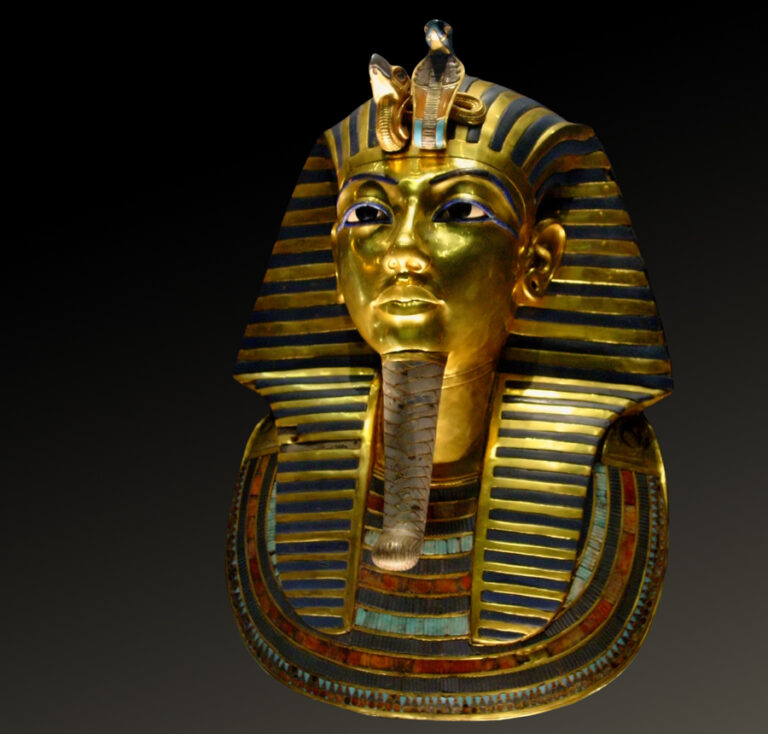
How much truth is there in the so-called “pharaoh’s curse” that began with Lord Carnarvon’s premature death from a mosquito bite? Did, in fact, more than twenty people, all involved in some way with the discovery, die in mysterious circumstances ? And, going on from there, has the aphorism that says “One must not disturb the sleep of the dead,” colored the truth in popular imagination?
What it is known for certain is that the find was fundamental to a better understanding of Ancient Egypt’s history, in areas such as private life, habits and customs, society in general, arts, culture, beliefs, science and technology, and the extensive knowledge of this remarkable people.
Even today the decoding of the numerous objects found in the tomb is open to several diverse interpretations. In any case, we know there is plenty of knowledge to be found there, all invested with auras of mystery and enigma, and still defying elucidation by historians and archaeologists.
Could thorough analysis of the objects found in the tomb and on the pharaoh’s body lead to mysteriously hidden profecies? Could they contain secrets of Ancient Egypt and even future peoples, such as the Maya, as has been suggested by the scientist Maurice Cotterell? Some archaeologists follow this path and point out that there are many parallels between Tutankhamun and Lord Pakal, a Mayan boy king of Palenque in Mexico, both being representations of Quetzalcoatl, the Feathered Serpent.
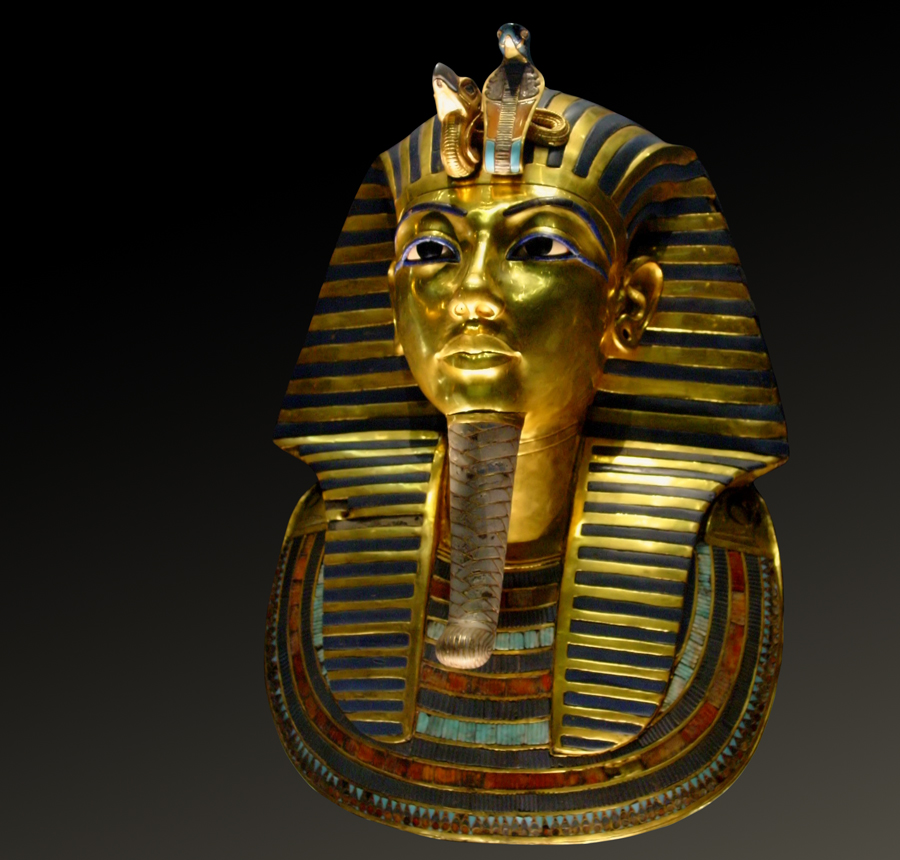
How much truth is there in the so-called “pharaoh’s curse” that began with Lord Carnarvon’s premature death from a mosquito bite? Did, in fact, more than twenty people, all involved in some way with the discovery, die in mysterious circumstances ? And, going on from there, has the aphorism that says “One must not disturb the sleep of the dead,” colored the truth in popular imagination?
What it is known for certain is that the find was fundamental to a better understanding of Ancient Egypt’s history, in areas such as private life, habits and customs, society in general, arts, culture, beliefs, science and technology, and the extensive knowledge of this remarkable people.
Even today the decoding of the numerous objects found in the tomb is open to several diverse interpretations. In any case, we know there is plenty of knowledge to be found there, all invested with auras of mystery and enigma, and still defying elucidation by historians and archaeologists.
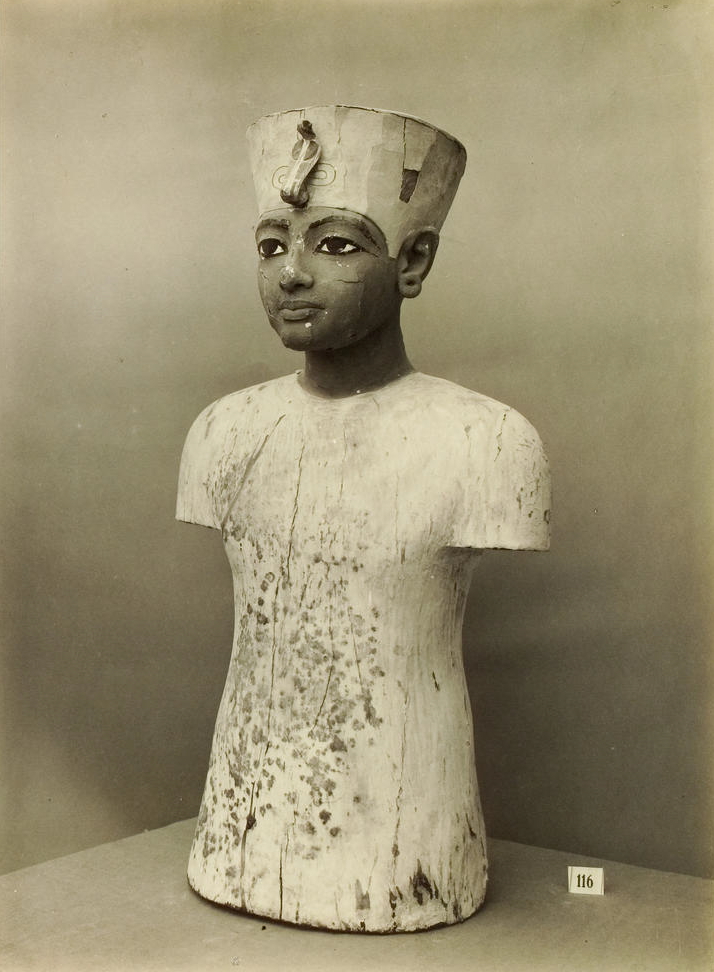
There is an evident contrast between what is known about Tutankhamun’s reign and the sumptuousness of the tomb, not forgetting how much was erased from his empire.
If the pharaoh’s death came about in an unexpected way, whether by accident or assassination, there is an apparent contradiction between that and the wealth that was found in the tomb, which would certainly have required a long time to prepare and arrange. Or can we imagine that Tutankhamun knew he would die prematurely, and left everything prepared?
Tutankhamun or Tutankhaten? We know so little about his reign. So much was expunged, so many questions remain… Perhaps it was when faced with these persistent doubts that, a hundred years ago, Carter was moved to express himself in a laconic way: ”As far as our current knowledge extends, we can say for sure that the only thing worth noting in his life is that he died and was buried.”
Despite everything that has been found since that hopeless statement, the Boy Pharaoh seems to feed undecipherable mysteries into the human imagination; mysteries which wait for new discoveries, which may be unravelled with each step of science.
And so [the study of] Ancient Egypt’s history proceeds, more and more fascinating and mysterious, always waiting for new findings that may bring us more clarifying answers. Or are we destined to live with these enigmas until rationalization, that very human characteristic, is replaced by a deeper, more daring and creative outlook?

